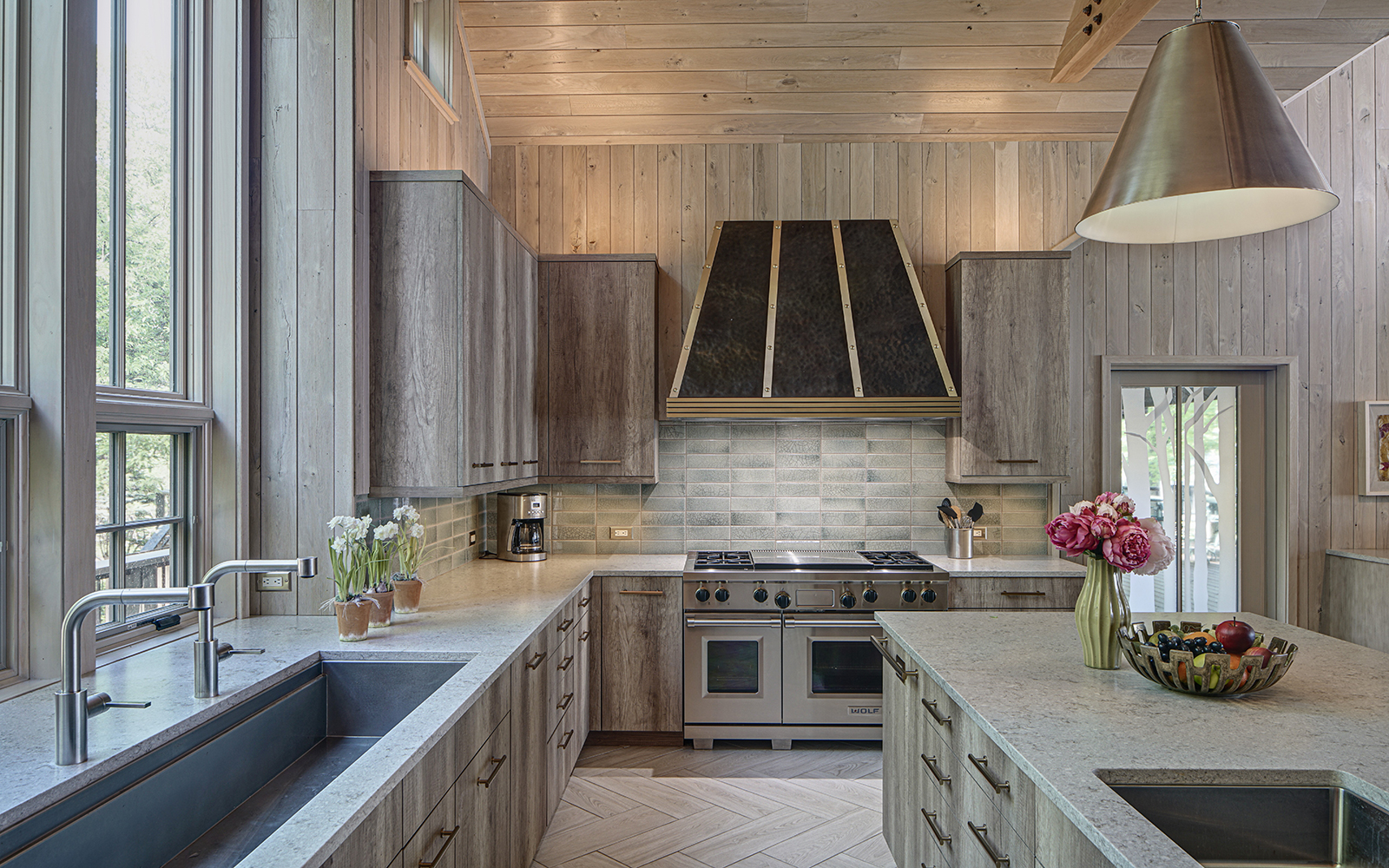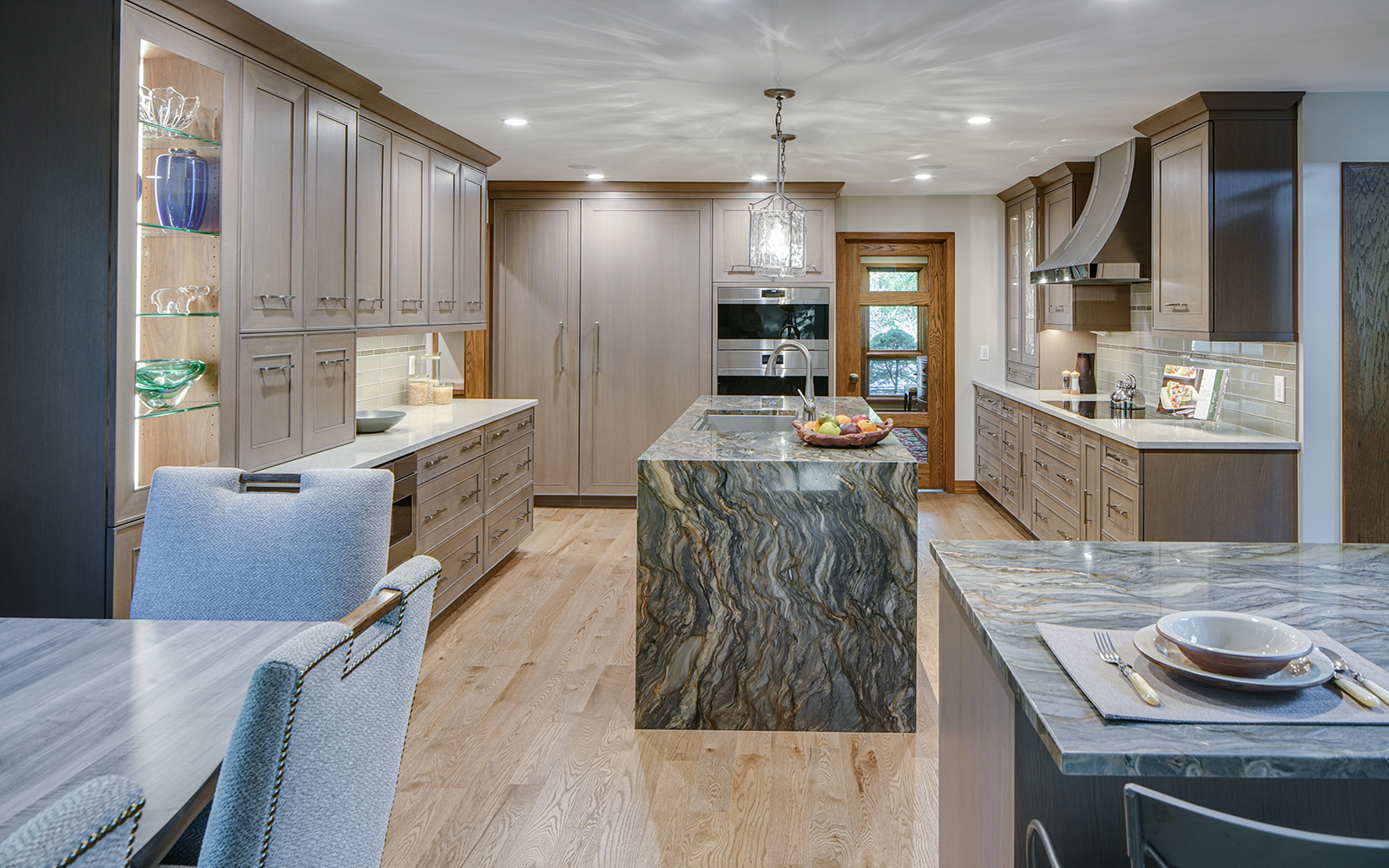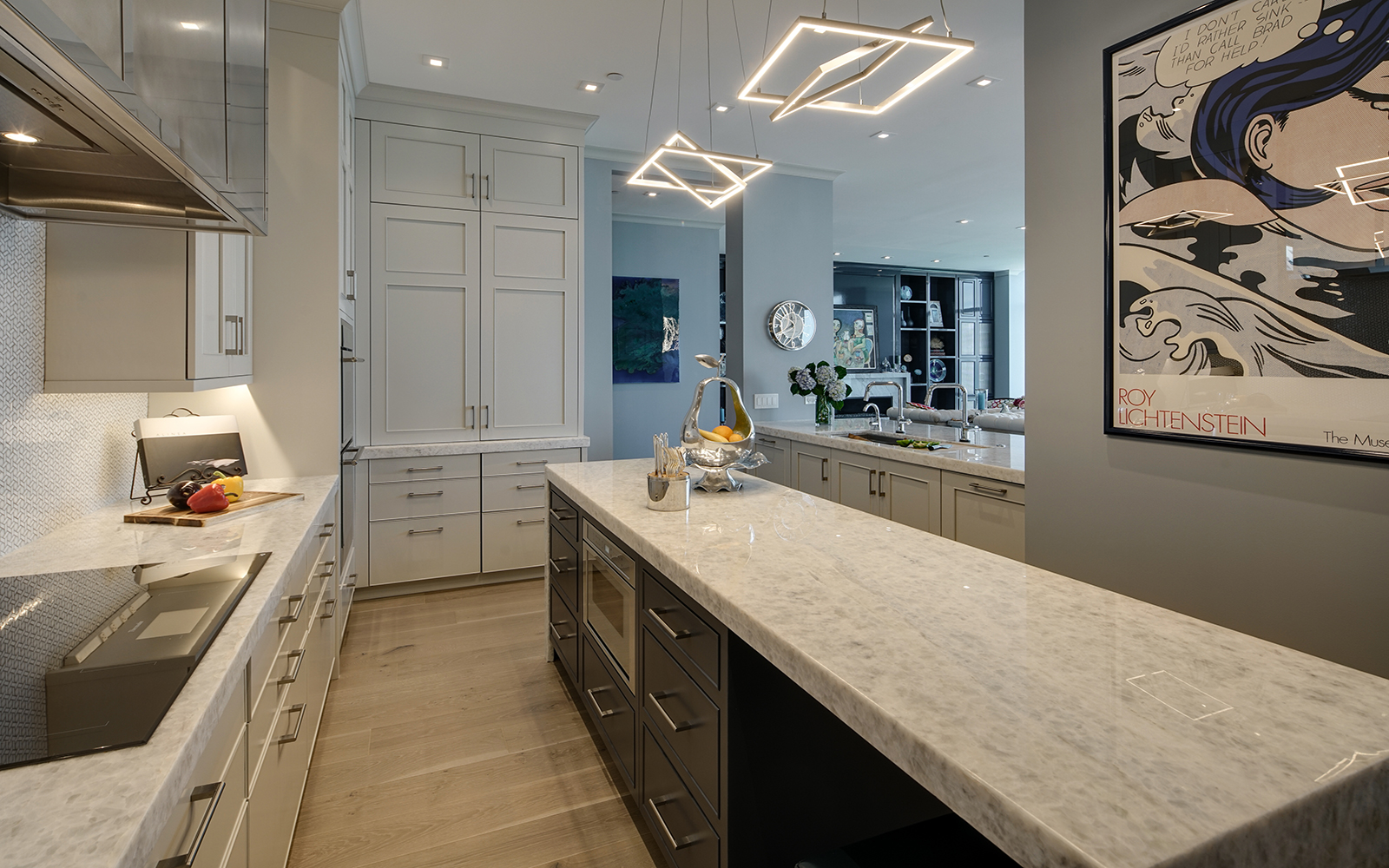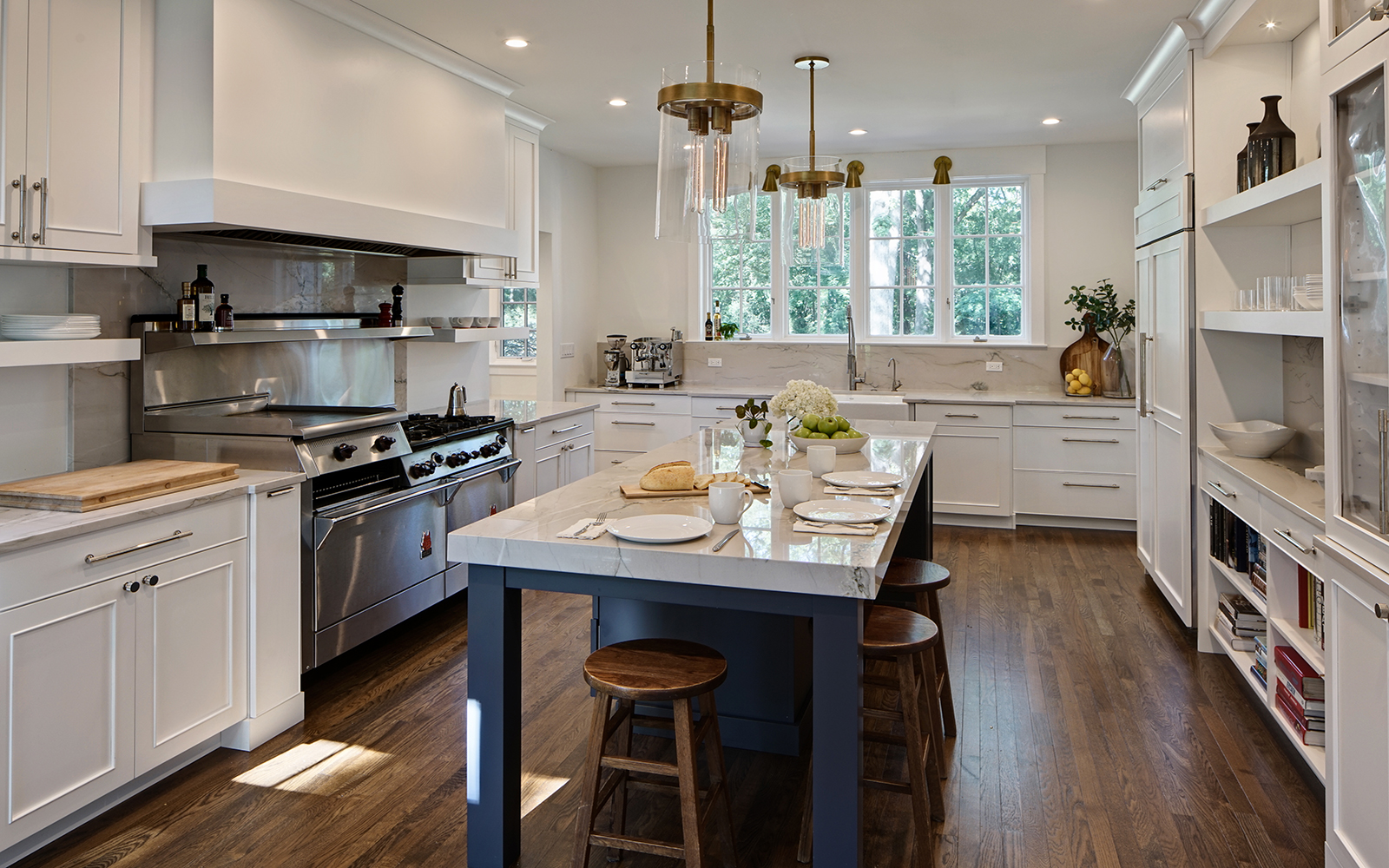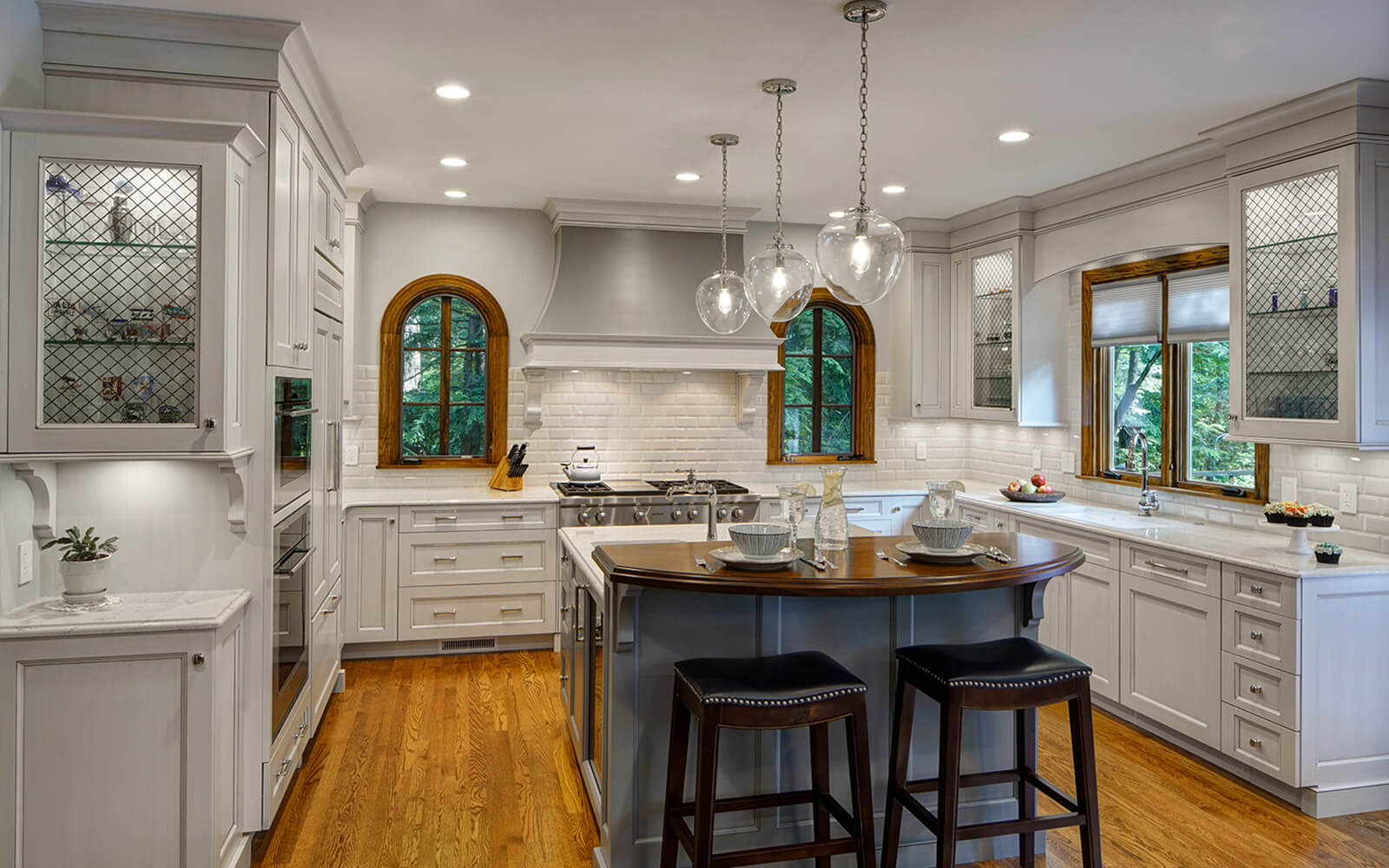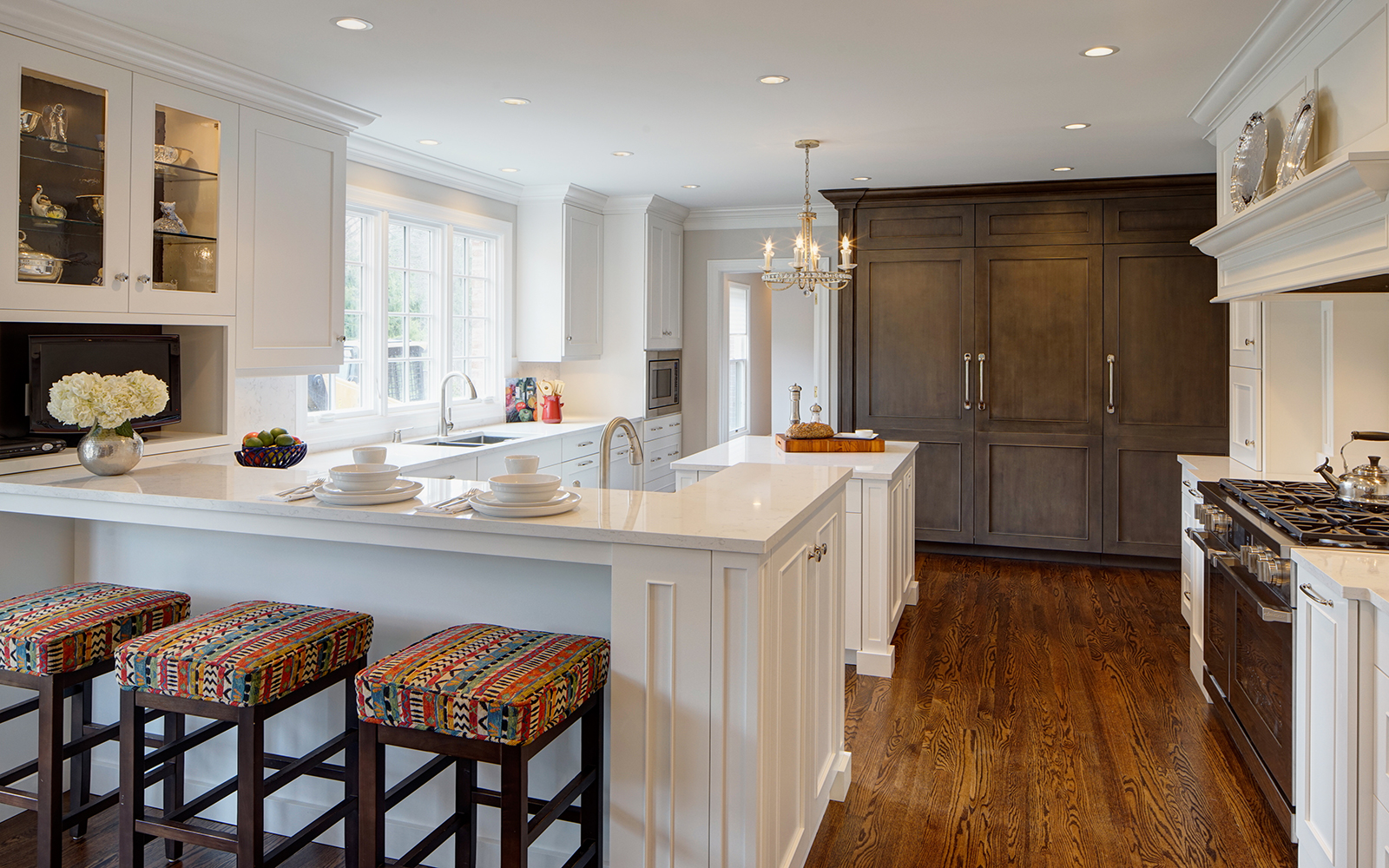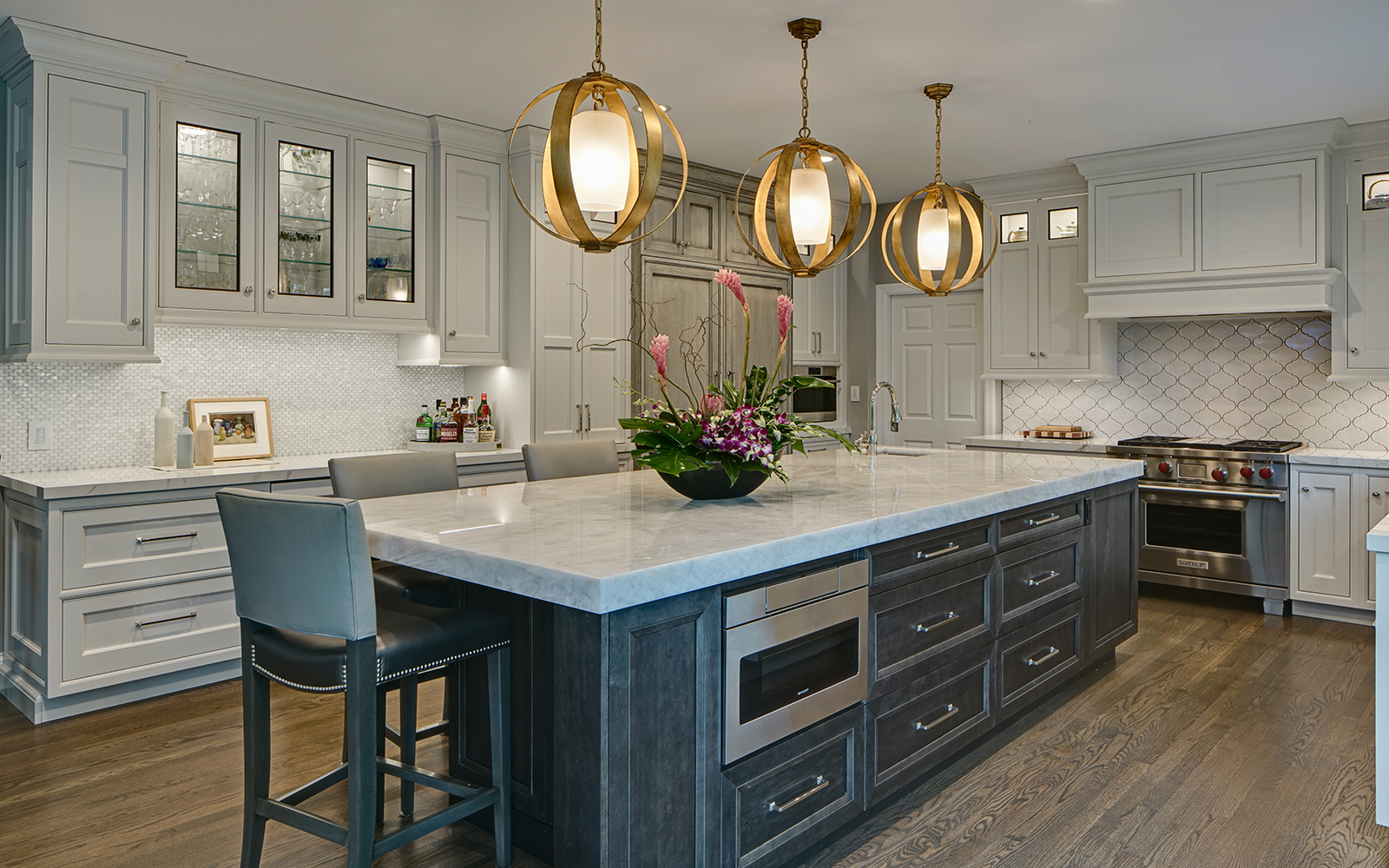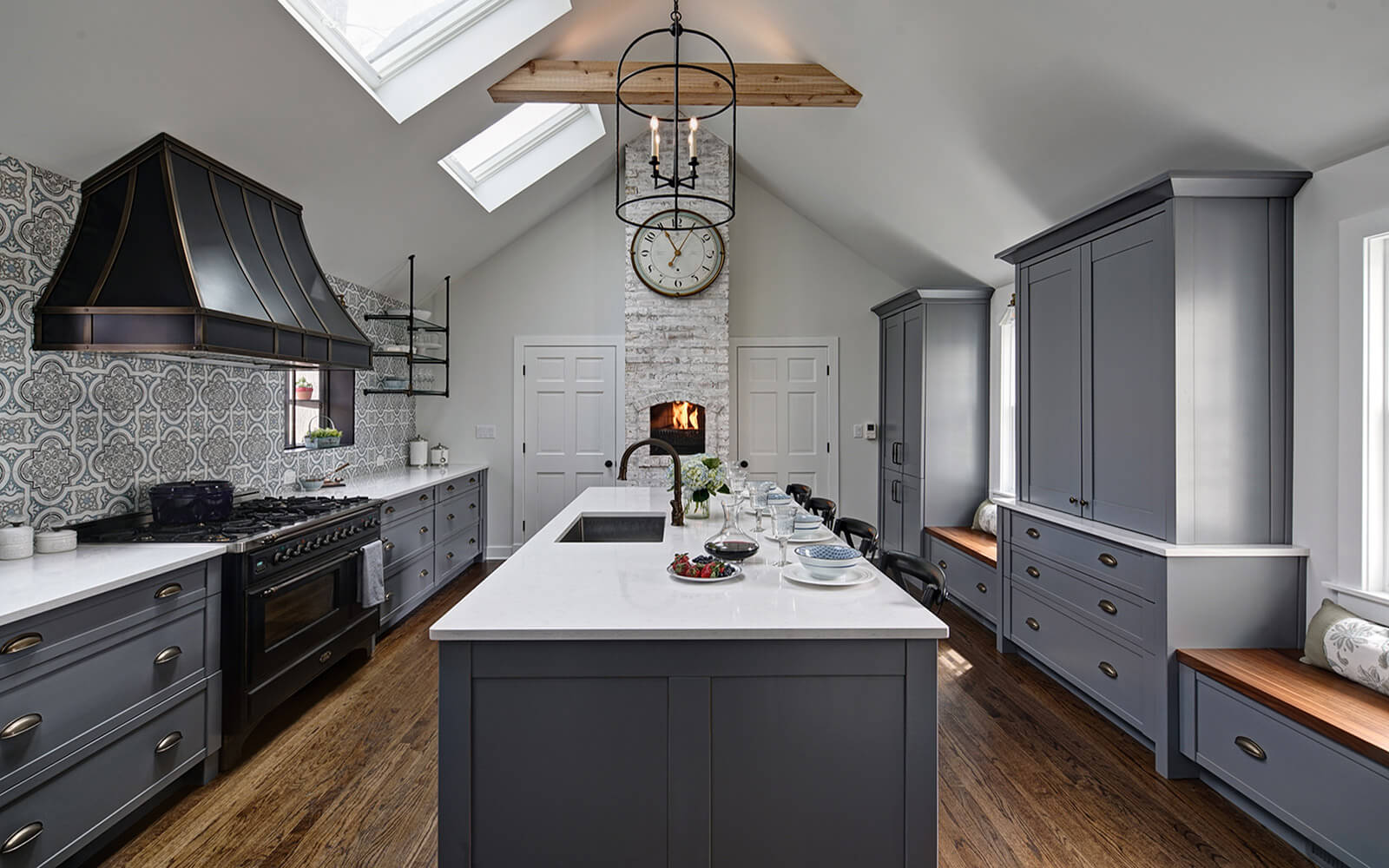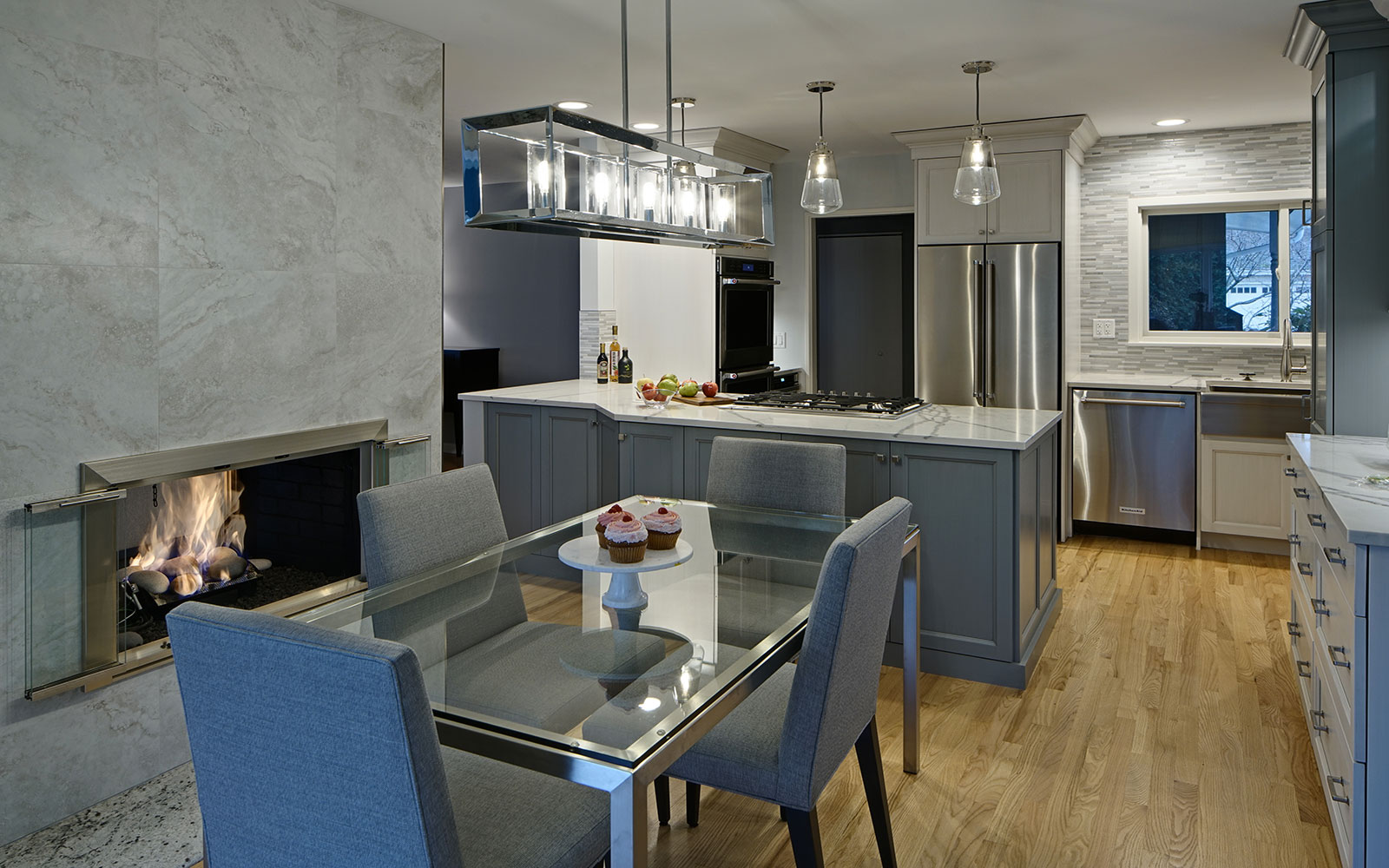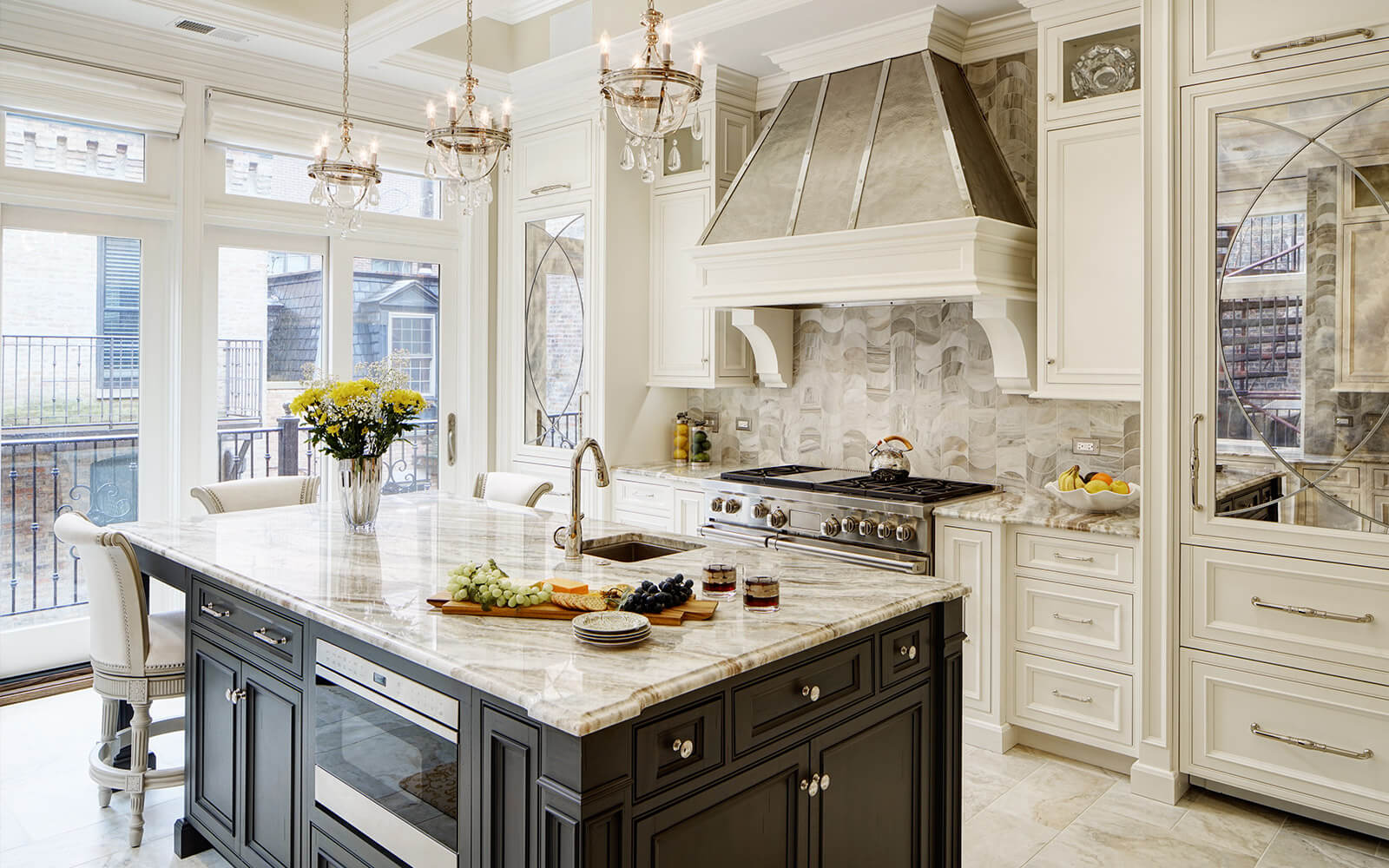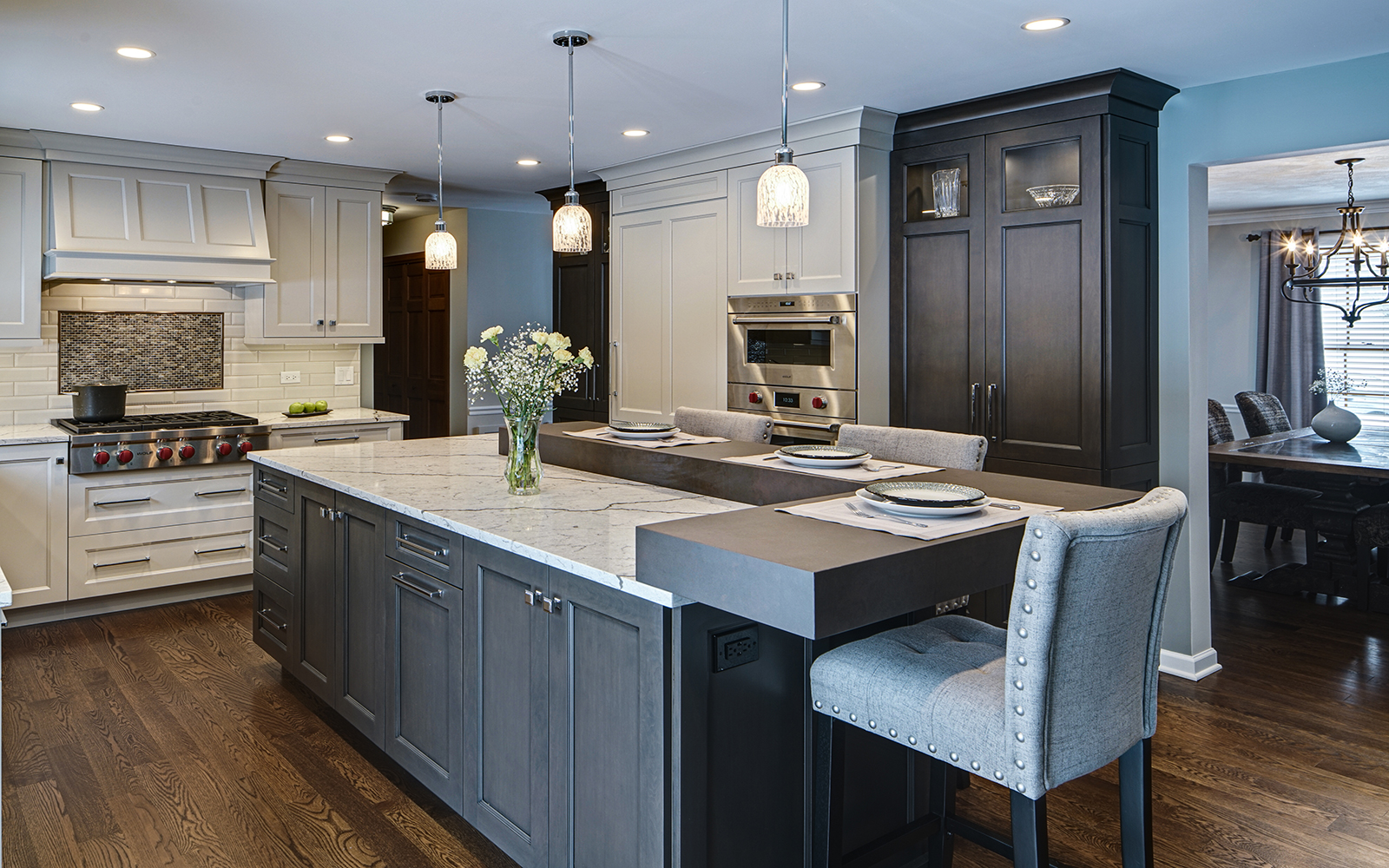Choosing Materials for Your Kitchen Remodel
Choosing Materials for Your Kitchen Remodel
In any kitchen remodel, choosing materials is one of the most difficult decisions. What are the functional differences between granite and marble? Is wood an expensive option for kitchen countertop material? The questions are never ending.
Here’s a tip: use, cost and color are three of the most important considerations when choosing materials for your kitchen remodel.
What to Consider When Selecting Materials for Your Kitchen Remodel
Before cost and color, consider how you use your kitchen. For some, the kitchen serves a traditional role – it’s all about preparing and eating meals. Perhaps you love to cook. Or maybe your family uses it as a space for school assignments or for working from home during the day. Maybe you host party guests for drinks and hors d’oeuvres at night.
Function
The Kitchen Triangle is one of the highest priorities in kitchen design because it is central to function. In the Kitchen Triangle, the cook moves among the three key kitchen points —the refrigerator, the sink, and the range or oven. The cook must be able to maneuver in a short space without running into something else, like a kitchen island. The Triangle’s points often utilize materials like steel and ceramics that can deal with water and hot or cold temperatures.
Like the Triangle, kitchen renovations consider kitchen zones: food prepping, cooking, cleaning, snacking, seating, and more. Depending on the zone, food, heat, and condensation can cause damage if the zone’s materials are not ideal. Natural stone, wood, ceramic, stainless steel, and glass are not only fashionable but also functional for flooring, countertops, backsplashes, and cabinet choices. Plus, these materials fit the criteria for green countertops because they use recycled materials.
Lifestyle
Not all of these materials, however, are best for all situations. When choosing materials for your kitchen remodel, be aware of the durability, capabilities, and upkeep involved.
For example, copper is a gorgeous kitchen backsplash option for traditional and modern kitchens. Unfortunately for active cooks and young families, copper dings easily on impact. Glass is a formidable option in terms of versatility – it is impervious to water, comes in a variety of styles and colors, and is very durable.
The National Kitchen and Bath Association’s Design Trends 2021 study revealed a rise in work and school usage in family kitchens. A total of 63% percent of respondents dedicated kitchen space to a desk or computer.
So, usage is clearly a key factor in choosing products and materials for your kitchen. Make decisions that suit your lifestyle.
Cost
Cost is another key consideration when selecting materials for your kitchen remodel. Stainless steel is one of the least expensive options, while copper and natural stone fall into the midrange of pricing. Zinc, wood and pewter are more expensive but offer an uncommonly luxurious look. Some materials, like glass, spread across all price ranges depending on the type and quality.
With all materials, these price categorizations vary due to quality, supply, and demand. Overwhelmed yet? Don’t worry – our experienced designers are ready to help.
How to Decide Whether to Replace or Reface Your Kitchen Cabinets
Like other surfaces, kitchen cabinets will show the signs of frequent door opening and closing. Drawer fronts get scratched and dinged when you put utensils away. Do you need to un-ding and un-scratch those fronts or replace your kitchen cabinets altogether?

What Refacing Kitchen Cabinets Means
Cabinet refacing means replacing cabinet doors, cabinet drawer fronts, and cabinet hardware. It can also involve resurfacing the cabinet trim. The cabinet framework remains the same, but refacing the kitchen cabinetry gives your kitchen a different look.
Why People Reface Kitchen Cabinets
Cabinet refacing can save you money as material and labor costs can be lower. Demo’ing and replacing kitchen cabinets involves a higher level of financial investment.
Why You Should Replace Kitchen Cabinets
Replacing kitchen cabinets fixes problems that result from aging cabinet framework. Refacing gives your cabinetry a new façade, sure, but it won’t solve your problems with sagging shelves and problematic drawers. Instead of refurbishing and repairing damaged or unsightly cabinetry, replacing cabinets tosses out the old and makes room for the new. Additionally, custom cabinetry can be locally sourced and built to last specifically for your kitchen.
In that vein, replacing cabinetry allows you to re-envision your kitchen. Cabinet refacing does not improve flow or space; the layout remains the same as before. New cabinets allow you to imagine an entirely new kitchen design. Custom kitchen cabinets, especially, provide a virtually limitless opportunity to redesign your kitchen space.
Both replacing and refacing cabinets are valid options for updating your kitchen, but the benefits of replacing cabinets outweigh the cost savings of refacing. New cabinets are the ideal remodeling option to create your dream kitchen.
Best Materials to Use in a Kitchen
Whether deciding on materials for a kitchen cabinet resurface or a kitchen floor, choosing which materials to use can be daunting.
Best Woods to Use in the Kitchen
Visible wood in kitchens tends to be hardwood like oak and birch. Softwoods are not ideal in kitchens because they are less durable than hardwoods. Because of their higher density, hardwoods resist scratches and dents and have greater structural integrity. Additionally, higher density means less airflow, so hardwoods are more fire-resistant than softwoods.
Currently, some of the most popular solid wood selections for kitchens are black walnut, cherry, bubinga, sapele, mahogany, maple, and wenge. In addition to being hardwoods, each of these wood varieties provides its own type of grain and color.
Maple’s neutral character adapts to many stains and styles, while cherry imbues its reddish hue to warm a room. Mahogany, wenge, and black walnut’s dark, rich notes add distinguished fashion, each with their own grain patterns. On the lighter side, sapele’s smooth ripples call back to its frequent use in guitar bodies, contrasting the distinctive beauty of bubinga’s wavy grain.
Best Metals to Use in the Kitchen
When it comes to metal, steel, pewter and copper are popular choices for luxurious kitchens. Stainless steel is relatively inexpensive to produce. Its heat resistance, strength, low maintenance and nonporous properties make it as desirable at home as it is in a commercial kitchen. In a residential setting, designers commonly use stainless steel in transitional spaces, backsplashes, countertops and appliances for contemporary kitchen designs.
Pewter is a tin-based metal used for countertops and tabletops. Like stainless steel, you can easily maintain pewter, but its handcrafted quality sets it apart. A bit warmer than stainless steel, pewter fits well with many kitchen designs.
Regarding color, copper’s recognizable shade and versatility make it a perfect choice for traditional kitchen styles while also integrating well into contemporary designs. Easy to maintain and reasonably priced, copper is, unfortunately, not recommended for countertops. Copper is poisonous, so it often appears on range hoods, backsplashes, bar tops and butlers’ pantries. Copper is a living finish because it changes color over time and is susceptible to dents.
Best Countertops to Use in the Kitchen
Because countertops are exposed to a variety of environmental factors, premium kitchen countertops tend to be made of metals, wood and natural stone:
- Metals like pewter and stainless steel are cost-effective choices for contemporary kitchen designs with minimal maintenance for active cooks.
- Wood provides a beautiful countertop surface, and its dents and scratches tend to contribute to its elegance. Solid wood countertops require regular maintenance to keep them looking new, especially if regularly exposed to water.
- Natural stone varieties provide heavyweight countertops with coveted patterns and colors. Each natural stone type also comes with unique properties to be aware of. Granite, for instance, is heat and scratch resistant, but marble is a soft stone that is prone to scratching and staining. As a result, granite is low maintenance, while marble may need to be rebuffed every year or two.
At Drury Design, we offer a wide variety of solid surface options for your kitchen countertop.

Keeping Color Scheme in Mind When Choosing Materials for Your Kitchen Remodel
In addition to materials, color plays a major part in a kitchen remodel. Keeping your kitchen color scheme in mind will help you set the tone of the room and emphasize your material choices. The National Kitchen and Bath Association reports the most popular countertops in 2021 heading into 2022 were light-colored quartz. Natural styles were and continue to be on the uptick.
Color Scheme and Psychology
According to studies, color impacts psychological functioning. For instance, red draws attention and suggests dominance and some people have a cautious response to it. Blue, on the other hand, improves attentiveness and performance. People find blue suggests trust and quality.
So, color plays a significant role in determining the mood of a room. You’re probably familiar with common phrases like “feeling blue” and “seeing red” – these telling phrases suggest how colors affect human emotion. Do you want your kitchen to emphasize blue’s cool, mellow emotions that improve attentiveness or red’s attention-getting luster that displays your personality?
Color Scheme and Materials
While the wall color you choose should reflect the feeling you want in the room, color should also be considered for how it pairs with the materials. Pairing does not necessarily mean that the color of the material needs to be the same as the color of the painted walls. A dark green granite countertop can pair nicely with a celadon (gray-green) paint. On the contrary, the green shades also pair stunningly with its complementary color, red, in cherry cabinetry, and copper backsplash.
Color Scheme and Your Kitchen
Ready to begin your kitchen renovation? Schedule My Consultation.
Wondering how your ideas and goals for your space might look when designed by one of our Certified Professional Kitchen Designers? To get started, we’d love to send one of our qualified professional designers to your home and explore the options with you. Contact us HERE or chat with us below to find out more.
About Drury Design Kitchen and Bath Studio
Founded by Gail Drury, CMKBD in 1987, Drury Design’s Client Focused Design™ approach integrates design recommendations, materials selection, and construction management into one seamless customer design, project management, and build experience. For kitchen, bath, and home remodeling ideas view Drury Design’s design portfolio or stop by the studio at 512 N. Main Street in downtown Glen Ellyn, Illinois.



